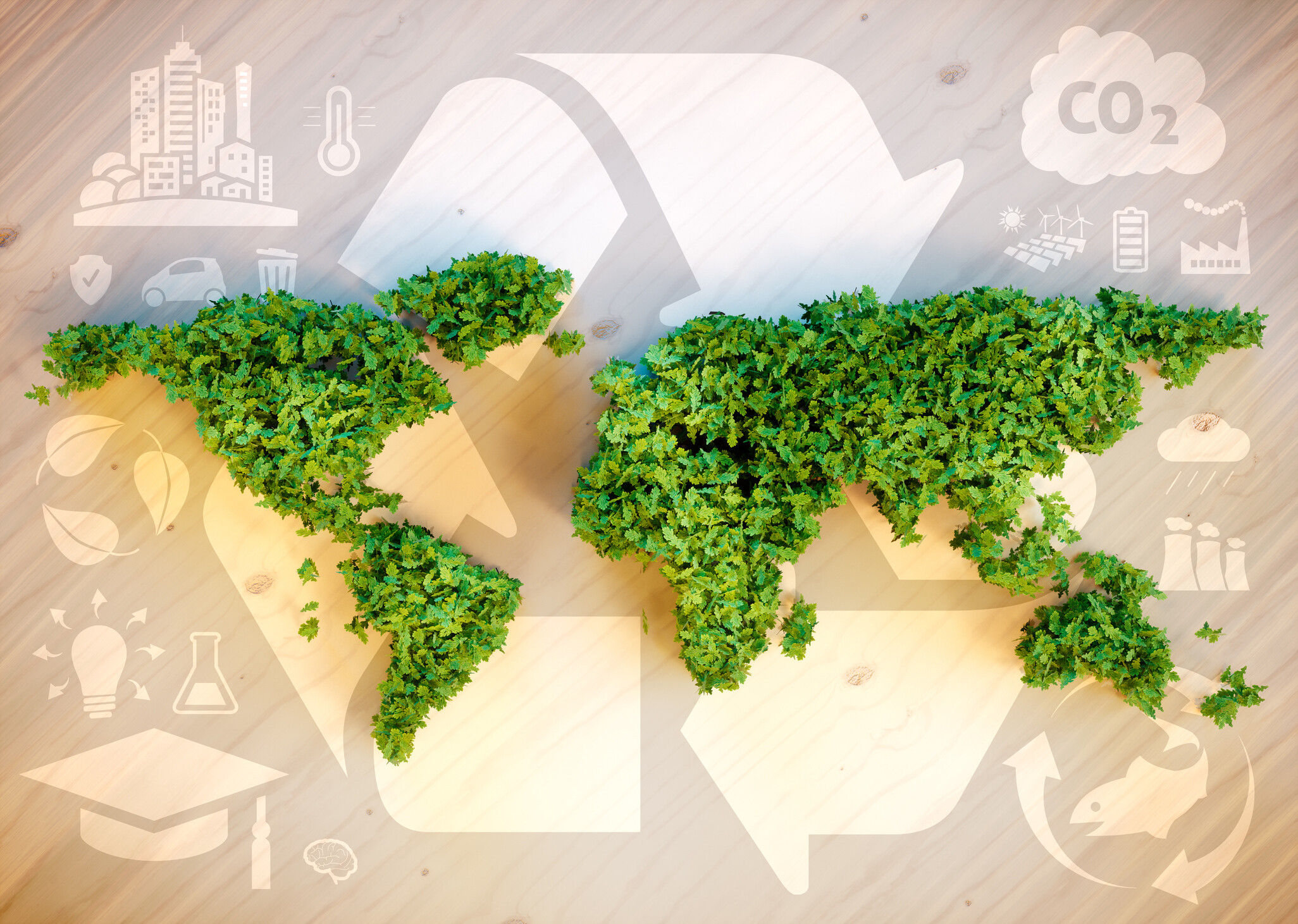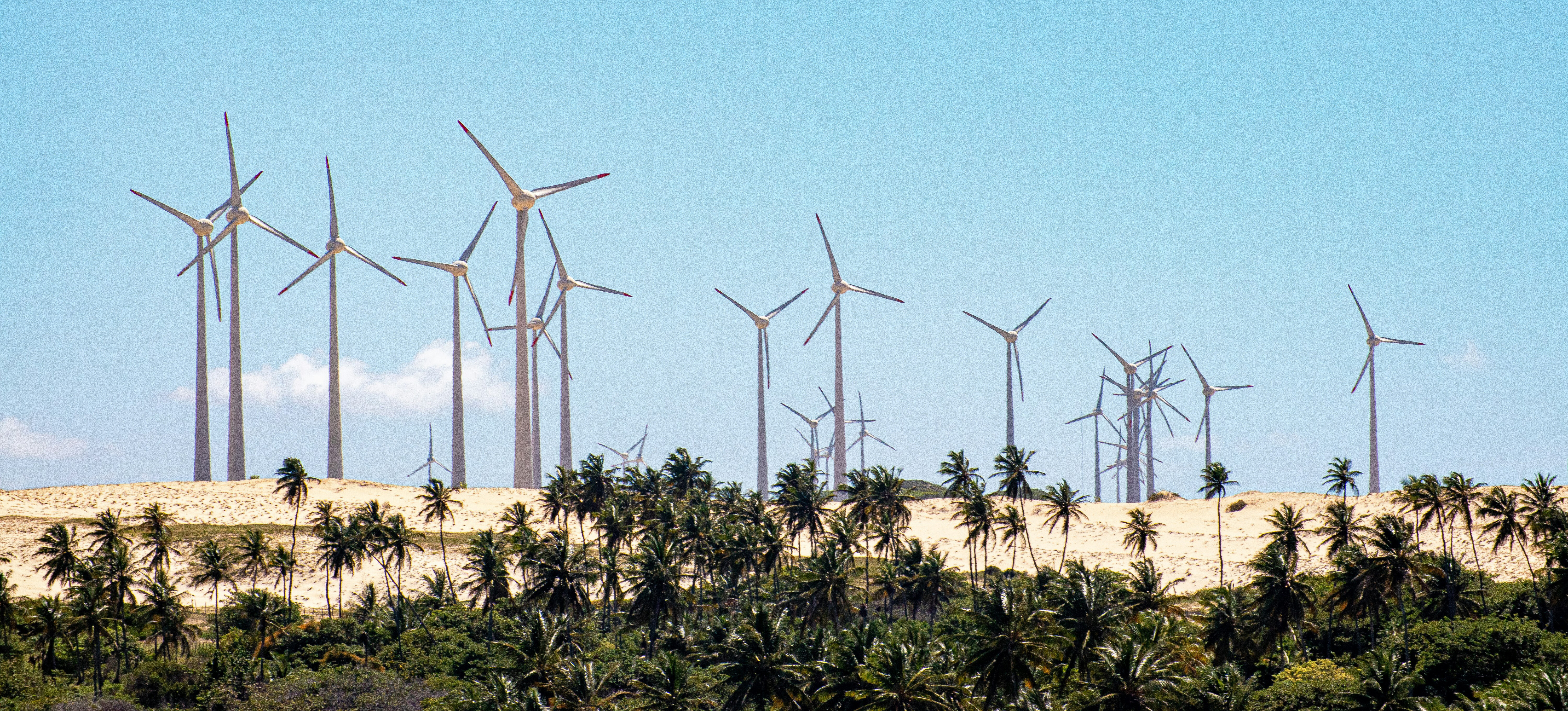Turning to wind power in Europe could power the entire world

By capitalizing on the wind power in Europe to its fullest, could run entire nations across the globe
Image: REUTERS/David Moir
Stay up to date:
Decarbonizing Energy
On windy days, Europe's growing number of wind farms can run entire nations on clean energy. But what if there were turbines in every potential location? Scientists have calculated that in such a scenario - however unlikely - Europe could generate enough onshore wind power to satisfy the entire world's needs.
Mapping the potential of wind power in Europe
Researchers at the University of Sussex in the UK and Aarhus University in Denmark have developed techniques to map the total potential of onshore wind energy across the European continent. The research suggests that Europe could produce 100 times more energy than it currently does from onshore wind farms.
The map below shows that countries in Eastern Europe offer the greatest potential for generating additional onshore wind power in Europe, with Norway and Iceland also presenting the opportunity to maximize renewable energy production.

The research team used digital wind atlases to provide finely detailed information on wind patterns across Europe. Armed with this data they identified that 46% of the European landmass would be suitable for the installation of wind turbines, and that’s after excluding urban areas, military sites and other landscapes unsuitable for reaping the wind power in Europe.
The study estimates that more than 11 million additional wind turbines could, theoretically, be installed over almost 5 million square kilometres of suitable terrain.
The report concludes that if this potential was fully exploited, Europe could provide the whole planet with all the energy it will require as far into the future as 2050.
However, we should note the use of the word ‘theoretically’. The research team is quick to point out that this is not a proposal, but an indication of the untapped onshore wind power in Europe.
“Obviously, we are not saying that we should install turbines in all the identified sites but the study does show the huge wind power potential right across Europe which needs to be harnessed if we’re to avert a climate catastrophe,” said co-author Benjamin Sovacool, Professor of Energy Policy at the University of Sussex.
The decline of coal
For two weeks in the early summer of 2019, the UK ran entirely on energy produced without burning coal. On those sunny, breezy days in May, the output from renewable sources allowed the UK National Grid to shut down its coal-fired power stations and pump solar and wind power into the homes and businesses of consumers.

The UK’s reliance on coal has declined dramatically and its government has announced plans to shut down all of its remaining coal-fired power stations by 2025.
A global shift to renewables
Its not just about tapping the wind power in Europe. China and India are installing renewable energy capacity on a vast scale.
China aims to increase renewable generating capacity by 38% in 2020 (compared to 2015 levels) with a total investment of $361bn, according to UN data. In recent years India has exceeded its targets for installing renewable capacity. In 2016 it overshot its target by 43%.
Looking ahead, India is planning to install 175 gigawatts of capacity in 2022, according to the UN. China is cancelling plans for new coal-fired power stations and India is expected to follow suit by 2022.
Winning a battle, losing the war
Despite the shift towards wind power in Europe, in addition, to clean energy production globally, greenhouse gas emissions that drive climate change continue to increase.
Global coal power generation increased 3% in 2018, with growth mainly in Asia, particularly in China and India.
The UN’s Emissions Gap Report 2018 shows there is no sign of a peak in the amount of carbon being released into the atmosphere.
The report shows that in 2017 emissions from energy and industry went up after three years of stability. Climate scientists have warned we have just over a decade to keep the global rise in temperatures below 1.5 degrees Celsius. But to achieve that, greenhouse gas emissions will have to be 25% lower by 2030 than they were in 2017. As we head towards 2020, we are still moving in the wrong direction.
What's the World Economic Forum doing about the transition to clean energy?
Don't miss any update on this topic
Create a free account and access your personalized content collection with our latest publications and analyses.
License and Republishing
World Economic Forum articles may be republished in accordance with the Creative Commons Attribution-NonCommercial-NoDerivatives 4.0 International Public License, and in accordance with our Terms of Use.
The views expressed in this article are those of the author alone and not the World Economic Forum.
Related topics:
Forum Stories newsletter
Bringing you weekly curated insights and analysis on the global issues that matter.
More on Energy TransitionSee all
Caroline Narich, Maria De Miguel, Jessika E. Trancik and Christine Gschwendtner
November 12, 2025
Why India’s carbon market needs a price stability mechanism for its new Carbon Credit Trading Scheme
Subham Shrivastava and Saurabh Trivedi
November 10, 2025
Andrea Willige
November 10, 2025
Network of the Global Future Councils and Kaiser Kuo
November 4, 2025
Esther Finidori and Lisa Wee
November 4, 2025
Ezgi Canpolat and Varalakshmi Vemuru
November 3, 2025






